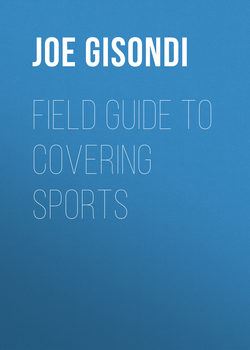Читать книгу Field Guide to Covering Sports - Joe Gisondi - Страница 34
На сайте Литреса книга снята с продажи.
Journalism Is Not Stenography
ОглавлениеHere’s what sports journalists know that sports fans may not: Journalism is not stenography, and an interview is not an ordinary conversation. In a relaxed feature interview—compared with the usual two-minute locker room rush job after the game—sports journalists might like their interview subjects to think they’re having a casual conversation. But in fact, that’s never the case. The interviewee may be answering off the top of his head, but the interviewer must always come prepared, listen closely while simultaneously thinking of follow-up questions, and stay tuned to the computer screen in his mind as it scrolls through the story that’s going to be written afterward. Interviewing is a complex, somewhat awkward process that, in the hands of a good interviewer, looks completely smooth and natural.
For sports journalists, interviews serve three main purposes: to acquire new information, to elicit an expert’s opinions, and to tap into a person’s thoughts and feelings. To accomplish all this, the key is preparation: learning enough about the sports, teams, and players to ask informed questions. You want to ask questions that yield new information and personal responses that go beyond the basics and help people see the world through the interviewee’s eyes. You can’t just arrive a few minutes before a game, watch it, and then ask a few general questions at the end. Publications and websites already contain plenty of hackneyed sports writing without you adding more clichés to the pile.
The 20 chapters in this book that detail how to cover individual sports divide the process into four categories: prepare—watch—ask—write. Interviewing has its own version of the first three categories, all in the service of having something great to write about. And if there’s a fourth category for interviewing, after ask, it’s this: keep asking.
